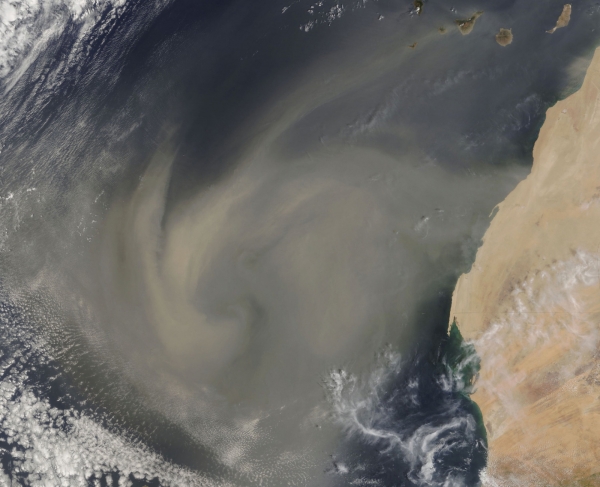There is a hidden link between Saharan dust clouds and the levels of atmospheric methane – a strong greenhouse gas. A team of international scientists, including Jan-Berend Stuut, studied a mechanism that could significantly alter our understanding of methane emissions and their impact on global warming. The implications for our planet's climate future are potentially huge. The results of this study are published this week in the Proceedings of the National Academy of Sciences.
Sahara Dust Important for Climate
“Sahara dust plays a series of important roles in our planet’s climate,” says Jan-Berend Stuut. “In high regions of the atmosphere, it controls the amount of sunlight reaching the earth’s surface. And it can trap heat in the lower part of the atmosphere. The dust is also fertilizing phytoplankton in the oceans. Plankton captures CO2 from the atmosphere. The iron and silica rich dust is their only food source far away from land.”
This new research incorporates a new mechanism whereby blowing mineral dust mixes with sea-spray to form ‘Mineral Dust-Sea Spray Aerosol’ (MDSA). The results suggest that MDSA is activated by sunlight to produce an abundance of chlorine atoms, which oxidize atmospheric methane and tropospheric ozone via photocatalysis. MDSA is the dominant source of atmospheric chlorine over the North Atlantic, the study finds.
Read more at Royal Netherlands Institute for Sea Research
Image: Satellite image of Sahara dust storm moving over the Atlantic Ocean. Photo: NASA.org via Royal Netherlands Institute for Sea Research


